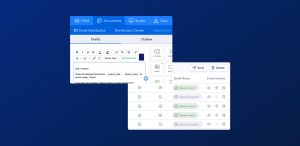We’ve talked many times before about the importance of effective data visualisation. It’s crucial for demonstrating to clients the value of what asset managers do – but there are far too many cases where these visualisations are done badly. Not only do they have to be eye-catching, but they have to be utterly clear as well.
There are many situations where data visualisations are useful to fund managers beyond the fund factsheet. Think about infographics for social media channels, for example, and other marketing campaigns – sharing great data visualisations through these channels will lead to higher levels of engagement and new business leads.
The forthcoming MiFID II regulations also place emphasis on transparency – what better way to quickly and convincingly demonstrate to clients that you have their best interests at heart than a visualisation that they can instantly understand without having to perform mental aerobics?
One of the most common mistakes that can be made in using data visualisations is to think that they can replace words altogether. While it is true that a picture can tell a story of 1,000 words, many data visualisations can be very difficult to decipher if we don’t have the first clue for what it is exactly we should be looking at. And if you are trying to communicate too much in just a single image, the visualisation will become completely ineffective.
What are you trying to say?
If you are doing a great job of managing your client’s investments then you should be communicating this very clearly to them. It’s all very well to present them with a pretty picture, but without some indication of the context your meaning could be lost. Take some time to think about what you are trying to say, write it down in as few words as possible, then work these words into the visualisation. They could be as a title or footnote, but should avoid jargon and acronyms as much as possible. Limit yourself to telling just one story per visualisation.
While you might be keen to keep the clean curves and pretty patterns in your visualisation front-and-centre, don’t discount using annotations. Small text bubbles – but not too small, they have to be readable – should be added to bring the viewer’s attention to the key trends or events depicted.
Of course, there are other key principles in data visualisation that you need to get right. These include:
Use the right tool
There are a variety of online tools that can help you create data visualisations, so make sure you’re using one that suits your purpose. Whether you need to clean the data, import data from a number of different sources, create tables and charts or more comprehensive dashboards, there are plenty of choice around. There’s a great list of some free tools here, but if you’re creating visualisations on a regular basis then do your due diligence and look at making an investment in a platform that fits your needs. Ensure you take some time to learn how to use it properly too, in order to get the best results.
Choose the best format
Another common mistake in data visualisation is choosing the wrong format in which to display data – using a bar chart when a line graph would be more appropriate, for example. This is fairly basic stuff, but could leave you looking very unprofessional if you don’t get it right.
It isn’t just the format you choose for the visualisation that you need to consider either – think about the format in which the visualisation is going to be seen too. Is it, for example, going to be on a printed page? Will the viewer be looking at it on a laptop screen, or even their smartphone? The effectiveness of the visualisation will depend on how it appears to its intended audience, so using a format that works no matter what device it is seen on is key.
Check your numbers add up
Again, this is a worryingly common error – especially when it happens in the financial services industry. Check and double check, and get a second and third pair of eyes on everything before it gets sent to a client.
Automate and personalise
If you are using data visualisation on a large scale then creating each one manually becomes massively time-consuming. At a time when fund managers are under increasing pressure to streamline processes to boost efficiency and reduce costs, you should be looking to tools that can help you to automate the process here. Kurtosys’ FundPress is a platform that will enable you to create digital documents and product web pages that update in real-time, or that can be mass generated at the click of a button. What’s more, you can personalise journeys for specific investor types. You can take a closer look at the features of FundPress here.
But it is vital that you remember the power of language. Visualisations shouldn’t entirely replace written text – a few well chosen words can really bring the visualisation to life and make what you are trying to communicate absolutely crystal clear.



